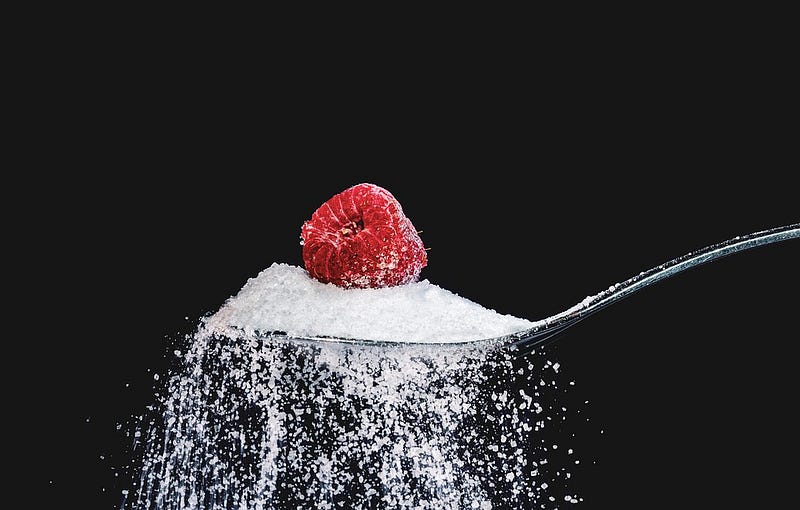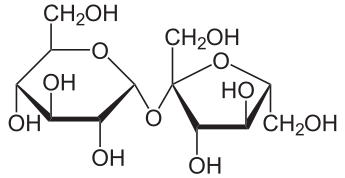Understanding the Gut's Role in Sugar Preference
Written on
Chapter 1: The Complexity of Sugar
Sugar, often considered a villain in the diet world, is more than just a simple term; it encompasses various molecules that play different roles in our bodies. At the core are monosaccharides—think glucose, fructose, and galactose. These basic units can combine to form disaccharides, like sucrose (a combination of glucose and fructose) or lactose (glucose and galactose). Furthermore, longer chains of sugar units create oligosaccharides and polysaccharides, which include substances like starch and cellulose. While these longer chains aren't typically referred to as 'sugars', they ultimately break down into simpler sugars within the body.
Despite the negative reputation sugar often receives, it’s essential to recognize that naturally occurring sugars in minimally processed foods usually aren’t harmful. All carbohydrate-rich foods contain sugars, even if they exist primarily in the form of polysaccharides that our bodies can convert into sugars. However, the narrative changes with added sugars, which can lead to health complications when consumed in excess.
For instance, incorporating excessive refined sugar into minimally processed foods can result in a significant intake of empty calories. These calories provide little nutritional value, lacking the vitamins, minerals, and fiber found in whole foods. As a result, the body processes these added sugars quickly, leading to minimal feelings of fullness despite the high caloric content.
There are instances where added sugars can serve a purpose, such as providing quick energy during intense physical activities like marathons. In these situations, refined sugars can be beneficial, appearing in products like energy gels.

Chapter 2: The Debate Over Artificial Sweeteners
When discussing sugar, artificial sweeteners inevitably come into play. These lab-created substances, ranging from aspartame to xylitol, were developed as a response to the growing concerns over added sugar. They allow manufacturers to maintain sweetness while reducing calories—a compelling selling point.
Artificial sweeteners generally contain fewer than 4 calories per gram, making them appealing for those looking to cut back on calories. Some, like aspartame, may have an energy content similar to sugar but are significantly sweeter, meaning much less is needed to achieve the desired taste.
While there is considerable skepticism surrounding the health implications of artificial sweeteners, research has not shown a strong correlation with increased cancer risk. In fact, many studies suggest that they can aid in weight management, oral health, and blood sugar control. However, the effects can vary based on the type of sweetener and individual responses.
It's crucial to sift through the available research, as studies often yield conflicting results. Factors like the population studied, dosage, and duration of the study significantly influence outcomes.

Chapter 3: Gut Cells and Sugar Cravings
Recent research involving mice has uncovered fascinating insights into sugar preference. Mice consistently choose sugar-sweetened water over artificially sweetened alternatives, even when lacking taste receptors. This suggests that something beyond taste is influencing their preferences.
In a controlled experiment, scientists infused the small intestines of mice with sugar or various artificial sweeteners and monitored the activity of the vagus nerve, a critical communication pathway between the gut and brain. The results were telling: the vagus nerve responded to sugar but not to artificial sweeteners.
By identifying specialized cells in the gut known as neuropods, researchers discovered that these cells release glutamate in response to real sugar, signaling the brain that the sugar is desirable. Conversely, artificial sweeteners prompted the release of ATP, a different type of signal. Notably, nearly twice as many neurons responded to the sugar signal compared to the artificial sweetener signal, indicating that sugar's appeal is far stronger.
To further validate their findings, researchers employed optogenetic techniques to manipulate the neuropods in mice, confirming that these cells indeed drive the preference for sugar over artificial sweeteners.
The study concludes that the interplay between fast neurotransmission and slower hormonal responses from gut cells plays a significant role in shaping our food choices. While this research provides valuable insights, it is essential to remember that mice are not humans, and further studies are needed to fully understand these mechanisms.
In the video titled "From Food to Feelings: The discovery of a gut sensor for sugar preference," researchers delve deeper into the connection between our gut and sugar cravings.
Another informative video, "How to Enhance Your Gut Microbiome for Brain & Overall Health," explores ways to support gut health for better overall well-being.
In conclusion, the next time you find yourself craving sugar, remember the complex role your gut plays in these desires.